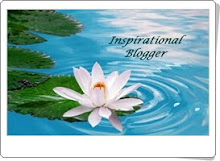When White Just Wont Do!!!
Another wonderful use for polysol I have been making aprons for my congo cart and I needed sliders for the neckbands also I have used plastic rings for bags and cord stops for crayon rolls But all I could get was white Unless I wanted to pay through the nose at Spotlight or Lincraft I made do in the beginning with some odds and ends I found in opp shops but they soon ran out!!
So I made an order with my trusty supplier Mrecht wonderful people to deal with for all haberdashery supplies very reasonable wholesale prices and so efficient!! My order was received next day!
Anyway to cut a long story short I polysoled the fittings and WOW!!! bright intense colours I have found if you rinse after one dyeing and then re-immerse as many times as you wish it intensifies the colour For full instructions and more applications scroll down the page Now My fittings match the intensity of my fabric dyeing Happy Dyeing!!
MORE POLYSOL FUN!!!
Well last week I showed you how to dye buttons this is only a small part of the versatility of these dyes!
So now we are going to work on TRANSFER DYEING. This is loads of fun and a great thing to do with kids! Be sure to work outside though or in a well ventilated area These dyes stink and can not really be that good for you to inhale!
Requirements
- Some good cartridge paper, (dont be tempted to use cheap butchers paper you need a pper that will hold a good amount of dye)
- Several empty jars (one for each colour and one for water)
- water colour brushes in several sizes.
- Polysol dyes
- water.
- 100% polyester fabric The denser the fabric the better the transfer Polyester satin is my favourite to use the dyes glow on the surface
- Choose a dye colour and mix about 1 teaspoon of dye powder to a small amount of warm to make a paste add more water to mix to required strength make your solution fairly strong do not be tempted to make up too much liquid it goes a long way.
- Mix the rest of the colours as well Then you are ready to begin.
- This is just like painting with water colours load your brush well and use a bigger brush for larger areas.
- Use a small fine brush for line work and do not load on too much colour.
- Make sure your painting is dry BUT dont leave it too long some moisture in the dye makes a brighter transfer
- Have you iron set no hotter than PERMANENT PRESS
- Place your design face down on the polyester and iron
- BE careful not to move your fabric and add a far bit of pressure
- Do not leave the iron too long in the one spot as the irons steam holes may become visible on your design.
- You can do a second transfer with your design it may be a fraction lighter than the 1st but really will not be that different.
- You can reapply dye to the paper design and let it dry it will then be good for two more transfers.
Dyeing Buttons
A friend of mine a couple of years ago showed me some buttons she had hand dyed I was delighted by all the different shades of colour she had achieved by the one dye bath When she showed me the the dyes she had been using I drew on my knowledge of dye craft and realised she was using a a dye developed for polyester. I love the Polysol dyes they have such a range of uses some of which I will show you as I develop this tutorial page. Some buttons did not take the dye these I surmised must have a percentage of acrylic in their makeup, Polysol dyes require a 100% polyester makeup to be fully effective, but will dye with lower percentages, this results in the tonal variance. Some buttons that dyed lighter probably had a combination of acrylic and polyester. The dyes my friend was using are a product of a scrapbooking supply firm that I cannot for the life of me remember the name of However you can achieve the result by simply buying these dyes they are much cheaper and will last a long time Batik Oretoro have them for sale and you can order them here You can order small amounts of 50 gms at a reasonable price and they will last you a long time.
I found some instructions on other web sites that stated you could use Dylon or Rit that are easily purchased over the counter In theory this should be correct as both companies market a blended dye suitable for use on a variety of textile types. after my initial play with the polysol I decided to test out both Rit and Dylon
The results were disappointing very few of the buttons took colour with dylon admittedly the ones that took were a nice bright colour but only a fraction of my op shop purchased white buttons dyed Using a blened of both the Dylon and Polysol I got a 100% dye takeup but the colour tended to crock (rub of the surface) afterwards Rit achieved very little colour take up as well. Most of my buttons dyed in the Polysol a good 89% and considering the expense of combining dyetypes I have decided polysol wins my vote.
Anyway lets get down to business:
1. In a small stainless steel or enamel dyepot (kept only for dyeing), dissolve two teaspoons of dyepowder in a little hot water.
2. Add more hot water to the pot (enough that will cover your buttons)
3 Place buttons to be dyed in a small polyester bag with a drawstring such as this, These bags can be used over and over again once dyed the colour will not transfer from the cloth to the next lot of buttons.
4.Heat the water in the pot until the surface of the water begins to steam. When it becomes hard to see the surface of the water because of the amount of steam! Remove the pot from the heat source Please be careful you do not want to boil the dye If you see any bubbles that signal boiling is about to start remove from the hotplate immediately.
5.Leave the bag of buttons in the hot dye solution for about 5 to 7 mins.
6. rinse well in cold water Your buttons are done!
7. repeating the process will dye the buttons slightly darker, also if you reuse the same dye bath for a fresh lot of white buttons the next batch will get lighter.
8. discard dye after use and keep all dyeing utensils separate from anything used for food preparation











.gif)




No comments:
Post a Comment